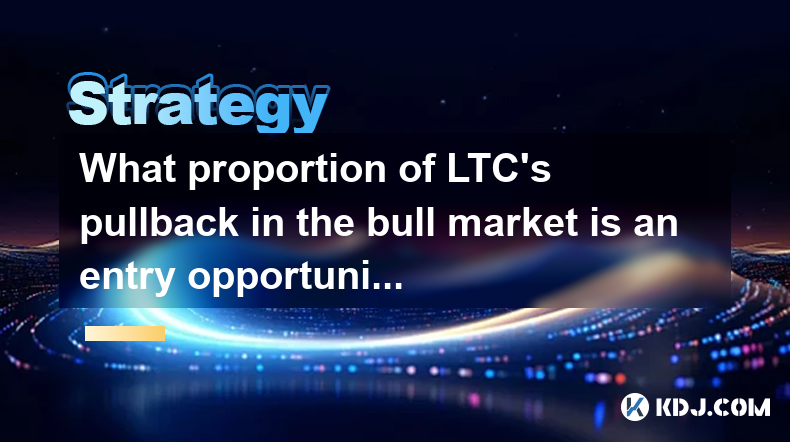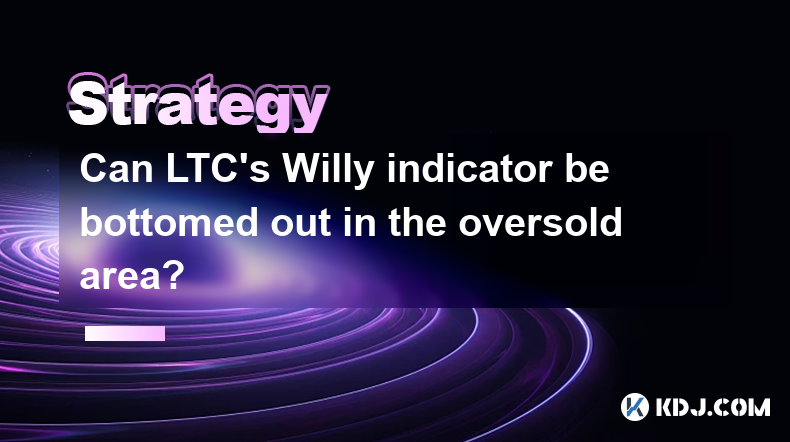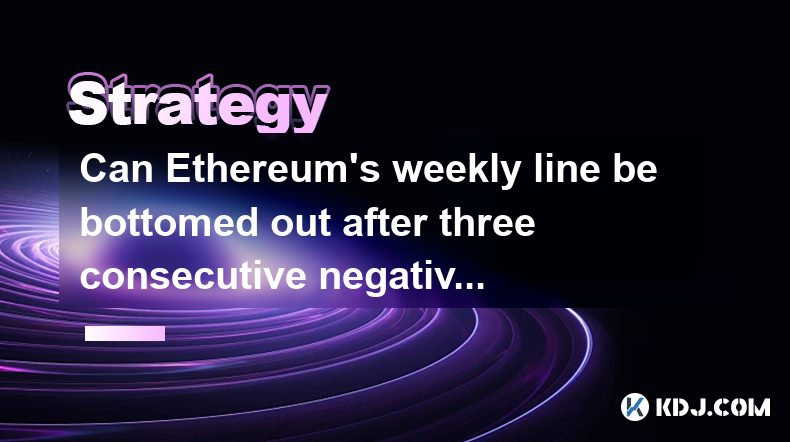-
 Bitcoin
Bitcoin $92,797.8357
-0.08% -
 Ethereum
Ethereum $1,758.6497
-1.57% -
 Tether USDt
Tether USDt $1.0000
-0.03% -
 XRP
XRP $2.1873
-2.17% -
 BNB
BNB $598.4009
-1.60% -
 Solana
Solana $150.2791
0.45% -
 USDC
USDC $1.0000
0.01% -
 Dogecoin
Dogecoin $0.1766
-1.22% -
 Cardano
Cardano $0.7008
0.33% -
 TRON
TRON $0.2457
0.21% -
 Sui
Sui $3.0960
4.07% -
 Chainlink
Chainlink $14.7276
-1.04% -
 Avalanche
Avalanche $22.1706
-0.56% -
 UNUS SED LEO
UNUS SED LEO $9.2165
1.99% -
 Stellar
Stellar $0.2700
0.85% -
 Shiba Inu
Shiba Inu $0.0...01339
-0.71% -
 Toncoin
Toncoin $3.1385
1.26% -
 Hedera
Hedera $0.1838
0.91% -
 Bitcoin Cash
Bitcoin Cash $349.7807
-1.68% -
 Polkadot
Polkadot $4.0587
-0.64% -
 Litecoin
Litecoin $82.2851
-1.55% -
 Hyperliquid
Hyperliquid $18.1461
-1.67% -
 Dai
Dai $1.0001
0.00% -
 Bitget Token
Bitget Token $4.4128
-3.05% -
 Ethena USDe
Ethena USDe $0.9994
0.02% -
 Pi
Pi $0.6509
-2.49% -
 Monero
Monero $225.8054
-1.68% -
 Uniswap
Uniswap $5.8067
-2.82% -
 Pepe
Pepe $0.0...08608
-4.14% -
 Aptos
Aptos $5.3975
2.40%
What proportion of LTC's pullback in the bull market is an entry opportunity?
Litecoin's pullbacks of 20-40% in bull markets have historically been good entry points, but investors should consider market sentiment and technical indicators before entering.
Apr 24, 2025 at 08:28 am

Understanding LTC's Pullback in the Bull Market
LTC, or Litecoin, is a well-known cryptocurrency that often follows the broader trends of the crypto market, including bull and bear markets. A pullback in a bull market refers to a temporary decline in the price of an asset after a period of significant gains. For investors and traders, understanding the proportion of these pullbacks that can be considered entry opportunities is crucial for maximizing returns.
The key to identifying an entry opportunity during a pullback lies in analyzing historical data, market sentiment, and technical indicators. Pullbacks can vary in depth and duration, and not all pullbacks are equal in terms of their potential as entry points. In this article, we will delve into the specifics of Litecoin's pullbacks during bull markets and discuss how to identify the proportion that represents a good entry opportunity.
Historical Analysis of LTC Pullbacks
To understand the proportion of LTC's pullbacks that serve as entry opportunities, it's essential to look at historical data. Analyzing past bull markets can provide insights into the typical behavior of Litecoin during these periods. For instance, during the bull market of 2017, Litecoin experienced several pullbacks, some of which were followed by significant price increases.
- In April 2017, Litecoin saw a pullback of approximately 20% after a rapid rise. This pullback was followed by a strong recovery, with prices eventually reaching new highs.
- In September 2017, another pullback occurred, this time around 30%. Again, this dip was followed by a robust upward movement.
From these examples, we can see that pullbacks in the range of 20% to 30% during a bull market have historically been good entry points for Litecoin. However, it's important to note that past performance does not guarantee future results, and each pullback must be evaluated in the context of current market conditions.
Market Sentiment and Technical Indicators
Market sentiment plays a significant role in determining whether a pullback is a good entry opportunity. During a bull market, if the overall sentiment remains positive despite a temporary decline in price, it can be a sign that the pullback is a buying opportunity. Tools like social media sentiment analysis and news aggregation can help gauge the current sentiment towards Litecoin.
Technical indicators are also crucial for identifying entry points during pullbacks. Some commonly used indicators include:
- Moving Averages: A crossover of shorter-term moving averages below longer-term ones can indicate a pullback, while a subsequent crossover back above can signal a good entry point.
- Relative Strength Index (RSI): An RSI dipping below 30 can suggest that Litecoin is oversold, indicating a potential entry opportunity.
- Bollinger Bands: A price touching the lower Bollinger Band during a pullback can be a sign that the price is due for a rebound.
By combining market sentiment analysis with technical indicators, investors can better determine the proportion of LTC's pullback that represents a viable entry opportunity.
Case Studies of LTC Pullbacks
Let's examine a few case studies to illustrate how pullbacks in Litecoin can be analyzed for entry opportunities.
Case Study 1: 2020 Bull Market
In the bull market of 2020, Litecoin experienced a pullback of approximately 25% in May. At the time, the broader market sentiment remained bullish, and technical indicators such as the RSI were showing signs of an oversold condition. Investors who entered at this pullback saw significant gains as Litecoin continued its upward trajectory.
Case Study 2: 2021 Bull Market
During the 2021 bull market, Litecoin saw a more significant pullback of around 40% in May. Despite the deeper decline, market sentiment was still positive, and technical indicators suggested that the pullback was a buying opportunity. Those who entered at this point benefited from the subsequent recovery and continued bull run.
These case studies demonstrate that pullbacks ranging from 25% to 40% can be considered entry opportunities, provided that market sentiment and technical indicators support the decision.
Risk Management and Entry Strategies
Risk management is crucial when entering during a pullback. Investors should set clear stop-loss levels to protect against further declines if the market does not recover as expected. A common strategy is to set a stop-loss at a level slightly below the lowest point of the pullback.
Entry strategies can vary based on individual risk tolerance and investment goals. Some investors may choose to enter in stages, buying a portion of their desired position at different levels during the pullback. Others may opt for a single entry at what they perceive to be the bottom of the pullback.
- Staged Entry: Buy 33% of the position at the first sign of a pullback, another 33% if the price continues to decline, and the final 33% at what appears to be the bottom.
- Single Entry: Enter the entire position at the perceived bottom of the pullback, based on technical indicators and market sentiment.
Evaluating the Proportion of Pullbacks as Entry Opportunities
To determine the proportion of LTC's pullbacks that can be considered entry opportunities, investors should consider the following factors:
- Depth of the Pullback: Pullbacks in the range of 20% to 40% have historically been good entry points.
- Market Sentiment: A positive overall sentiment despite the pullback is a strong indicator of a buying opportunity.
- Technical Indicators: Indicators like RSI, moving averages, and Bollinger Bands can provide additional confirmation.
- Risk Management: Setting appropriate stop-loss levels and considering staged entry strategies can help manage risk.
By carefully evaluating these factors, investors can identify the proportion of Litecoin's pullbacks that represent viable entry opportunities during a bull market.
Frequently Asked Questions
Q: How can I differentiate between a normal pullback and the beginning of a bear market for Litecoin?
A: Differentiating between a pullback and the start of a bear market involves analyzing broader market trends, Litecoin's performance relative to other cryptocurrencies, and using technical indicators like moving averages and trend lines. A pullback is usually short-lived and followed by a continuation of the bull market, whereas a bear market is characterized by sustained downward trends and negative market sentiment.
Q: Are there specific tools or platforms that can help me monitor Litecoin's pullbacks in real-time?
A: Yes, several platforms and tools can help monitor Litecoin's pullbacks in real-time. TradingView offers advanced charting and real-time data, allowing you to set up alerts for specific price levels. CoinGecko and CoinMarketCap provide real-time price updates and historical data, which can be useful for tracking pullbacks.
Q: Can fundamental analysis be used to assess Litecoin's pullbacks, or is it primarily a technical analysis tool?
A: While technical analysis is more commonly used to assess pullbacks, fundamental analysis can also provide valuable insights. Factors such as Litecoin's adoption rate, technological developments, and overall market conditions can influence its price movements. Combining both technical and fundamental analysis can offer a more comprehensive view of potential entry opportunities during pullbacks.
Q: How does the volume of trading affect the assessment of Litecoin's pullbacks as entry opportunities?
A: Trading volume is a critical factor in assessing pullbacks. A pullback accompanied by low trading volume may indicate a lack of selling pressure, suggesting a potential buying opportunity. Conversely, a pullback with high trading volume might indicate stronger bearish sentiment, requiring more caution before entering a position. Monitoring volume alongside price movements can provide additional context for decision-making.
Disclaimer:info@kdj.com
The information provided is not trading advice. kdj.com does not assume any responsibility for any investments made based on the information provided in this article. Cryptocurrencies are highly volatile and it is highly recommended that you invest with caution after thorough research!
If you believe that the content used on this website infringes your copyright, please contact us immediately (info@kdj.com) and we will delete it promptly.
- Dubai's VARA and DLD Issue Warning Against False Claims Related to the DLD Real Estate Tokenization Project
- 2025-04-24 23:20:12
- Michael Saylor Did Not Post a Forecast or Drop a Chart Breakdown
- 2025-04-24 23:20:12
- As Countless Crypto Projects Awkwardly Pivot to AI, Eric Winer Has Been Building Bridges for Over a Decade
- 2025-04-24 23:15:11
- Coinbase and PayPal Have Deepened Their Partnership
- 2025-04-24 23:15:11
- TRUMP Coin (TRUMP) Surged in U.S. Pre-Market Hours to $14.69 After the President Announced Plans to Host Two Special Events
- 2025-04-24 23:10:12
- Ruvi AI: The Next Solana? Combining Blockchain with AI to Create a New Market
- 2025-04-24 23:10:12
Related knowledge

Is the increase in LINK's net outflow from exchanges a positive signal?
Apr 24,2025 at 02:35pm
The recent increase in LINK's net outflow from exchanges has sparked discussions within the cryptocurrency community about its implications for the token's future performance. LINK, the native token of the Chainlink decentralized oracle network, has seen a notable shift in its net outflow from exchanges, which many interpret as a positive signal. This a...

Is LTC's UTXO age distribution useful for judging buying and selling points?
Apr 23,2025 at 05:42pm
Is LTC's UTXO age distribution useful for judging buying and selling points? Understanding the UTXO (Unspent Transaction Output) age distribution of Litecoin (LTC) can provide valuable insights into the behavior of its holders and potentially help in making informed decisions about buying and selling points. The UTXO age distribution refers to the age o...

Can LTC's Willy indicator be bottomed out in the oversold area?
Apr 24,2025 at 01:43pm
Understanding the Willy IndicatorThe Willy indicator, also known as the Willy ratio, is a technical analysis tool used in the cryptocurrency market to gauge the sentiment of a particular asset, in this case, Litecoin (LTC). It is calculated by dividing the total trading volume of an asset by its market capitalization. The resulting ratio helps traders u...

Can Ethereum's weekly line be bottomed out after three consecutive negatives?
Apr 24,2025 at 10:56am
In the dynamic world of cryptocurrencies, understanding market trends and patterns is crucial for investors and traders alike. One of the significant aspects of technical analysis in this field is the examination of weekly line charts, particularly for major cryptocurrencies like Ethereum. The question of whether Ethereum's weekly line can be bottomed o...

Where can I find the current average holding cost of XRP in the market?
Apr 22,2025 at 11:00pm
Where can I find the current average holding cost of XRP in the market? Finding the current average holding cost of XRP in the market can be a challenging task, as this information is not readily available on most mainstream cryptocurrency platforms. However, there are several methods and resources that you can use to estimate this figure. In this artic...

What should I do if LINK's NVT signal diverges?
Apr 24,2025 at 04:14am
When the NVT (Network Value to Transactions) signal for LINK (Chainlink) diverges, it can be a significant indicator for investors and traders to take action. The NVT ratio is a valuation metric used in the cryptocurrency space to assess whether a cryptocurrency is overvalued or undervalued based on its network activity. A divergence in the NVT signal s...

Is the increase in LINK's net outflow from exchanges a positive signal?
Apr 24,2025 at 02:35pm
The recent increase in LINK's net outflow from exchanges has sparked discussions within the cryptocurrency community about its implications for the token's future performance. LINK, the native token of the Chainlink decentralized oracle network, has seen a notable shift in its net outflow from exchanges, which many interpret as a positive signal. This a...

Is LTC's UTXO age distribution useful for judging buying and selling points?
Apr 23,2025 at 05:42pm
Is LTC's UTXO age distribution useful for judging buying and selling points? Understanding the UTXO (Unspent Transaction Output) age distribution of Litecoin (LTC) can provide valuable insights into the behavior of its holders and potentially help in making informed decisions about buying and selling points. The UTXO age distribution refers to the age o...

Can LTC's Willy indicator be bottomed out in the oversold area?
Apr 24,2025 at 01:43pm
Understanding the Willy IndicatorThe Willy indicator, also known as the Willy ratio, is a technical analysis tool used in the cryptocurrency market to gauge the sentiment of a particular asset, in this case, Litecoin (LTC). It is calculated by dividing the total trading volume of an asset by its market capitalization. The resulting ratio helps traders u...

Can Ethereum's weekly line be bottomed out after three consecutive negatives?
Apr 24,2025 at 10:56am
In the dynamic world of cryptocurrencies, understanding market trends and patterns is crucial for investors and traders alike. One of the significant aspects of technical analysis in this field is the examination of weekly line charts, particularly for major cryptocurrencies like Ethereum. The question of whether Ethereum's weekly line can be bottomed o...

Where can I find the current average holding cost of XRP in the market?
Apr 22,2025 at 11:00pm
Where can I find the current average holding cost of XRP in the market? Finding the current average holding cost of XRP in the market can be a challenging task, as this information is not readily available on most mainstream cryptocurrency platforms. However, there are several methods and resources that you can use to estimate this figure. In this artic...

What should I do if LINK's NVT signal diverges?
Apr 24,2025 at 04:14am
When the NVT (Network Value to Transactions) signal for LINK (Chainlink) diverges, it can be a significant indicator for investors and traders to take action. The NVT ratio is a valuation metric used in the cryptocurrency space to assess whether a cryptocurrency is overvalued or undervalued based on its network activity. A divergence in the NVT signal s...
See all articles























































































